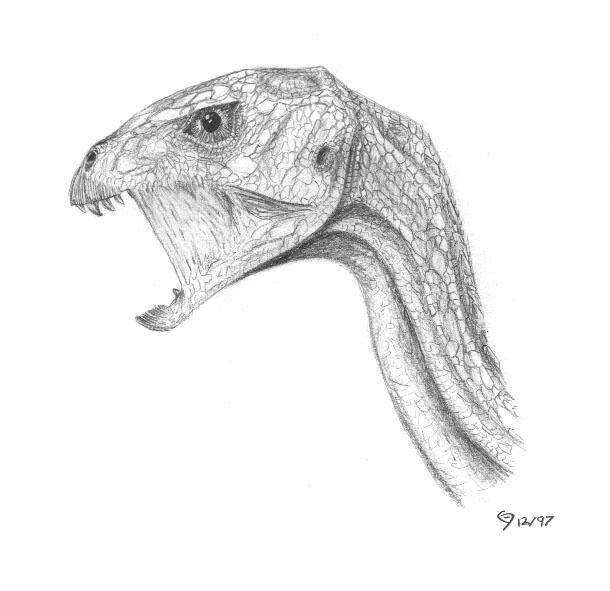

Essentially, the name Qilong comes from the Chinese name for an ornithschian dinosaur, meaning "agile" or "nimble dragon", "Agilisaurus" multidens ("many toothed swift lizard") also known as "Yandusaurus" ("Yandu lizard"), to which the animal pictured above was refered to. Aside from the history of the name, I found that the animal above was the most asthete, beautiful dinosaur I'd seen, and so I named the site after it. All in all, I thing it was a good idea. The name, by the way, is pronounced KEE-long, or KEE-lyung.
In this website are a variety of icons, each being a clickable button. At present, some of these buttons may not work, being to parts of the site that are not ready yet, but most will be. Each icon applies to a specific section; these are:

This leads to a cladistic and/or phylogenetic analysis of any particular group, or a close approximation of one.

This leads to a global map and geological data (including time and place) for any particular genus, group, or age.

This leads to the Oviraptorosauria Section.

This leads to the Dinobirds Section, but at present only one genus, Caudipteryx, falls under the definition; these are theropods and/or birds that are difficult to tell from the other, either "theropods" with feathers or "birds" sharing several features with theropods, in any combination, such as a long bony tail, feathers, a reversed hallux, uncinate processes, teeth or no teeth, and similar.
Additionally, there are general icons that allow passage from one page to another without a specific destination. Below, the first goes to the last page in a series, or to the home of the page at present, or to the next in a sequence.
 Go back a page.
Go back a page.
 Go to the next page.
Go to the next page.
Throughout the pages, all names of dinosaurs will be hyperlinked to their pages, if they have one, or a page with a short description and possibly a picture, if neccessary; also, references will be made to names and dates, as in "Barsbold (1983)" or "Ostrom (1970)" which indicate that at the bottom of the page, in the personal bibliography, called "References," there will be an entry whose author was Barsbold R. (for Dr. Barsbold Rinchen) or Ostrom, J.H. (for Dr. John H. Ostrom) and the date it was published; following will be the name of an article or book, the journal it was published in if it was (and if it was, it will have a volume and issue number), with the pages of the piece. These are popularly called "refs." This system is used in lieu of writing out the entire article within the text, especially if the reference is repeated. Otherwise, pretty much everything else is easily handleable.
|
|

|
|
|

|
|
|  | 
|